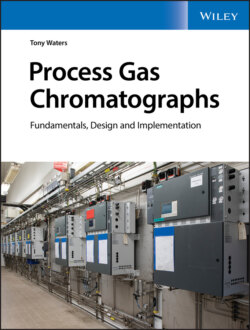Читать книгу Process Gas Chromatographs - Tony Waters - Страница 71
A challenge question
ОглавлениеImagine that the effluent from the column in Figure 3.1 flows into a detector and the detector signal is recorded in the form of a chromatogram. For this exercise, assume Figure 3.1 shows the correct position of the four peaks in the column at three minutes after sample injection.
Now predict what the chromatogram will look like after all the peaks have exited the column.
It's worth your time to stop for a moment and try to do this; you will learn a lot from the exercise. Be careful; it's more difficult than it looks!
You can draw your chromatogram on Figure 3.2. Sketch the chromatogram you would expect to get, showing your chosen time base in minutes and the exact positions of the four peaks.
Based on the information given in Figure 3.1, draw the chromatogram you would expect to see after all four peaks have passed through the detector. Your chromatogram should show the four peaks at their correct retention times. The injection marker is time‐zero on your chromatogram, but you must decide the time scale. In this exercise, don't worry about peak widths.
Figure 3.2 Draw Your Own Chromatogram.
How confident are you of your chromatogram? People rarely get it right at first attempt. The most common mistakes are:
Inserting all four peaks between 0 and 3 mins on the chromatogram
Assuming all four peaks are equally spaced
Assuming three of the peaks are equally spaced
Assuming any peak has a fractional retention time (none do)
Remember to measure retention times from sample injection to the apex of each peak; i.e., the retention of the average molecule.
Want to try again? We'll reveal the correct answer later.
